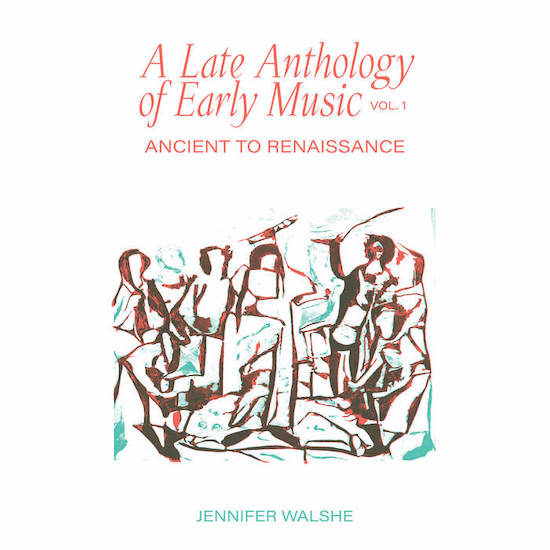As postulated by Arthur C. Clarke, “any sufficiently advanced technology is indistinguishable from magic.” In our current techno-social landscape, this sort of mysticism is pervasive, manifested through machine learning and other pompously named “artificial intelligence” methods – technologies that have, for better or (often) worse, infiltrated all areas of life. Of course, art could not have been spared. As the growing number of music-via-AI attempts demonstrates, idolatry and black box approaches to these computer techniques are doomed to fail. Expectations of creativity and futuristic aesthetics wash ashore trite pieces that border on the accidental. But by seeing these technologies for what they truly are – mere tools of augmentation, megaphones for creativity – the work of Dublin born composer Jennifer Walshe becomes a beautiful, purposeful aberration.
A Late Anthology of Early Music Vol. 1: Ancient to Renaissance, while subtly dichotomous, doesn’t succumb to the conflict between “the human” and “the machine”. Instead, it discovers serendipitous parallels. Here, the building materials are sourced from a torrent of Walshe’s a cappella singing regenerated by SampleRNN, an artificial neural network created and wielded by CJ Carr and Zack Zukowski alias Dadabots. And the partitur? The ostensible “history of Western music”, filtered through the artist’s whimsical perspective and teaching experience. Using the spawned samples as bricks and plaster, Walshe constructs a simulated narrative that traces the transformations of her voice in Dadabots’ accelerated Petri dish – where millennia fit in the span of minutes – and applies it to the similarly abbreviated canonical progress of vocal music.
The seventeen cuts cover the period from the 2nd to the 16th century in chronological order and constitute a digest of the music’s rhythmic, harmonic, and structural evolution. In lock-step, we hear and feel the neural network’s comprehension of Walshe’s singing change. The algorithm goes down one path, makes errors, traces back. Tries another way, makes errors again. This hungry, obsessive dance repeats until the recomposition starts resembling Walshe’s true voice.
But it’s the mistakes and early generations that delight. In the beginning, there was and is the Seikilos epitaph. Walshe recreates this earliest of preserved compositions using one of Dadabots’ equally green, most rudimentary generations of samples. Flutters, grunts, and whispers of a nascent proto-voice materialise from and dissolve into a hazy background, trying to approximate the piece with their oblique textures, humming a melody once known but forgotten. The rendition appears deliberately flawed, relishing the possibility of reinvention through uncertainty and humour.
Fast forward a few centuries, the sacred monophony of Hildegard von Bingen’s In Principio Omnes turns delirious, possessed by burbling, humming, and giggling noises. On Adam De La Halle’s motet Robins M’Aime and Pérotin’s Organum Triplum, polyphonic voices are given a percussive quality of an alien xylophone dragged through centuries until it sounded like the digital chirp of a dial-up modem. Throughout the album, Walshe’s articulation continues inhabiting impossible forms: from disorienting tonking bells, through uncertain murmurs, to Merzbow-like harsh noise.
By the time Carlo Gesualdo’s and Jacob Arcadelt’s madrigals come along, the synthetic voice has become endearingly textural but deranged as it blows raspberries, beatboxes squeaks, and screeches like fleas trapped in a burning circus – reminiscent of the controlled, absurd vocalisations of Joëlle Léandre and Lauren Newton’s Conversations. In the end, Giovanni Da Palestrina’s Missa Papae Marcelli, Agnus Dei I anchors the record with a haunting operatic inflection closely related to a real human voice and evoking of György Ligeti’s ghostly solemn choir works.
A Late Anthology… fits neatly into Walshe’s oeuvre. Concerned as much with its musical substance as with exploring the technology used to create it, it is a natural sequel to both the linguistic and vocal romps of 2019’s All the Many Peopls and the computational intelligence experiments of the ULTRACHUNK collaboration with visual artist Memo Akten. This album retains the same sense of experimentation and aesthetic direction, but with a new, lovely twist.


